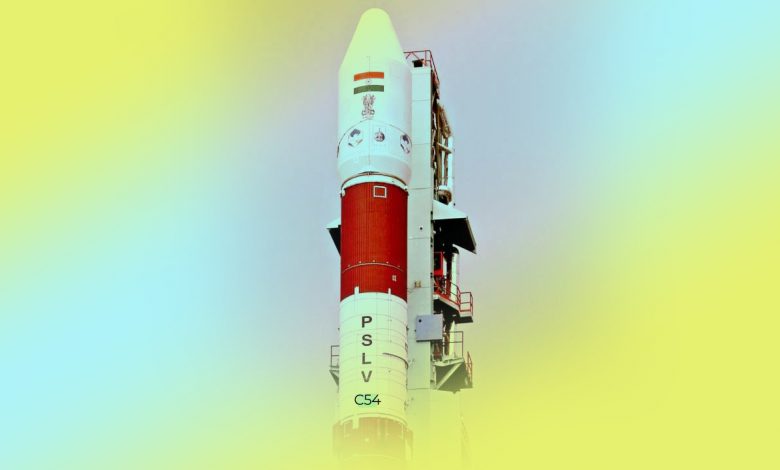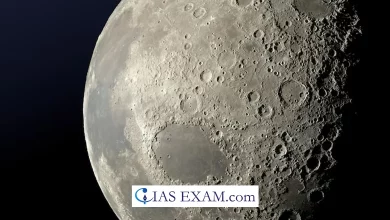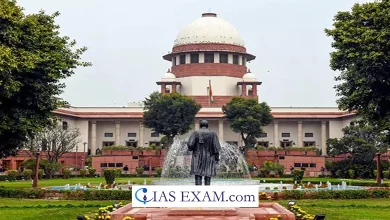Daily Current Affairs for UPSC
PSLV-C54

Topic- Space Technology [GS Paper-3]
Context- Recently, the Indian Space Research Organisation (ISRO) has successfully launched the 56th Polar Satellite Launch Vehicle (PSLV) C54 from the Satish Dhawan Space Centre in Sriharikota, Andhra Pradesh.
Key Highlights
- In one of the most extended missions, the Indian Space Research Organisation (ISRO) successfully placed nine satellites, including an Earth Observation Satellite (EOS-06), in multiple orbits with the help of the space agency’s Polar Satellite Launch Vehicle (PSLV-C54).
- This was the 56th flight of PSLV, that marks the final mission for the year for PSLV-C54 rocket.
- EOS-06 is envisaged to observe ocean color data, sea surface temperature, and wind vector data for oceanography, climatic and meteorological applications.
- The satellite also supports value-added products such as potential fishing zones using chlorophyll, SST and wind speed, and land-based geophysical parameters.
The Satellites Launched
Nano Satellite-2 for Bhutan (INS-2B):
- INS-2B satellite is a collaborative mission between the two nations India and Bhutan with two payloads.
- NanoMx, a multispectral optical imaging payload developed by Space Applications Centre (SAC) and APRS-Digipeater which is jointly developed by DITT-Bhutan and URSC was successfully deployed.
- Significance of INS-2B:
- The nano satellite will provide high-resolution images to Bhutan for the management of the country’s natural resources.
- The launch of the new satellite is part of India’s efforts to back the plan of Bhutanese King Jigme Khesar Namgyel Wangchuck to use advanced technology, including ICT and space technology, for the development of Bhutan.
- The collaboration between two countries also fits in with India’s “neighbourhood first” policy.
Anand:
- The Anand three axis stabilized Nano satellite is a technology demonstrator for miniaturized electro-optical payload and all other sub-systems such as TTC, power, onboard computer and ADCS from Pixxel, India was also placed in the orbit successfully.
Astrocast:
- Astrocast, a 3U spacecraft, is a technology demonstrator satellite for the Internet of Things (IoT) as the payload.
- There are in total four numbers of Astrocast Satellites in this mission.
- Certain spacecrafts are housed within an ISISpace QuadPack dispenser.
- This dispenser protects the satellite from contamination.
Thymbolt Satellites:
- The Thymbolt is a 0.5U spacecraft bus which includes a communication payload to enable rapid technology demonstration and constellation development for multiple users from Dhruva Space using their own Orbital Deployer with a minimum lifetime of 1 year.
EOS-6:
- The Earth Observation Satellite-06 (EOS-06) is the Oceansat series’ 3rd-generation satellite that is envisaged to observe ocean colour data, sea surface temperature and wind vector data to use in oceanography, climatic and meteorological applications.
- The satellite supports value added products such as potential fishing zones using chlorophyll, Sea Surface Temperature (SST) and wind speed and land based geophysical parameters.





.png)



